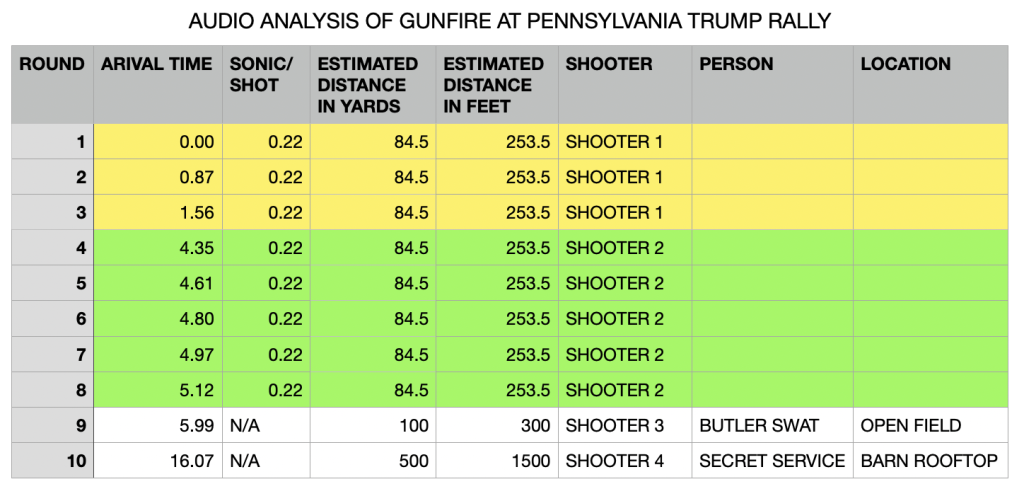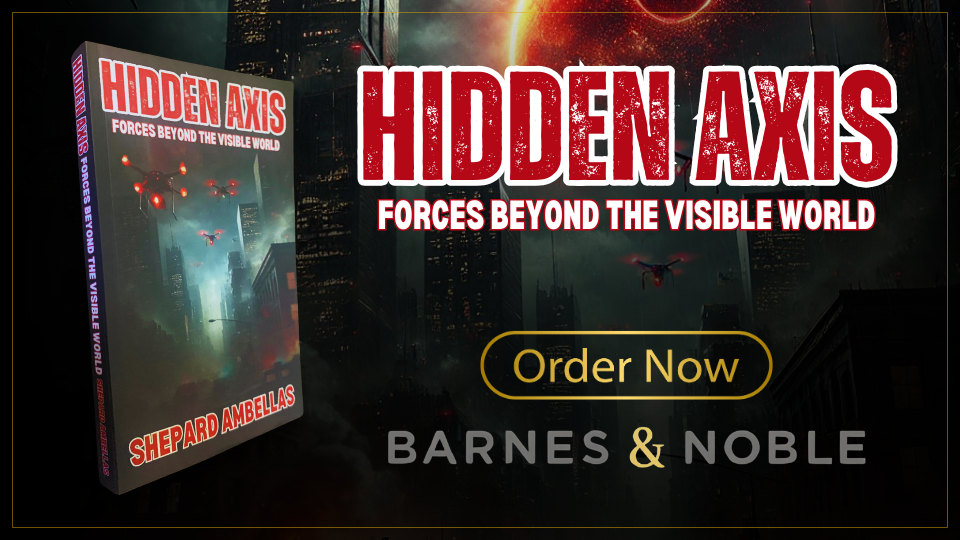(SQAUK) BUTLER COUNTY, Penn. — The nation was rocked by an assassination attempt on former President Donald Trump during a rally in Butler County, Pennsylvania, on July 13, 2024, further exacerbating an already divided political climate. Conflicting reports and rumors created chaos, prompting the public to demand clarity from official sources. However, FBI Director Christopher Wray’s recent testimony before a Senate committee has raised grave concerns about his credibility and the credibility of those sources. New evidence indicates that Wray may have blatantly lied under oath about critical details of the incident.
The rally was expected to be a typical event for Trump’s supporters, but it turned chaotic when gunfire erupted. Security forces and local law enforcement worked to protect the former president and other attendees. Initial reports stated that there were two shooters, both of whom were taken down by law enforcement. The primary shooter, Thomas Crooks, was found dead at the scene, and authorities swiftly cremated his body under questionable circumstances.
However, a bombshell report from CBS Pittsburgh aired on Friday morning challenges this narrative. The broadcast documents not two but three shooters at the rally, each playing a different role in the unfolding chaos:
Shooter #1: Thomas Crooks – The primary shooter, Crooks, was reportedly a disgruntled individual with a deep-seated hatred towards Trump. Armed with a high-powered rifle, he opened fire on the crowd and was later found dead at the scene. While initially presented as the sole or at least the main threat, new evidence suggests his role might have been part of a larger, more complex scenario.
Shooter #2: Local SWAT Officer – This officer, whose name has been withheld for security reasons, was part of the law enforcement detail at the rally. After hearing the shots, he left his assigned post to track down Crooks. From a reported 100 yards away, the SWAT officer fired a precise shot that struck the stock of Crooks’ firearm, causing shrapnel to fragment and severely injure Crooks’ face. This revelation challenges the official account that a Secret Service sniper simply killed Crooks and raises questions about whether this officer’s actions were fully disclosed in the initial reports. The distance from which the shot was fired highlights the officer’s marksmanship but also adds another layer of complexity to the narrative, particularly in light of the other shooters involved.
Shooter #3: Secret Service Sniper – The third shooter, identified as a Secret Service sniper, was stationed on a nearby rooftop, tasked with ensuring the safety of the former president. According to eyewitness accounts and corroborating security footage, this sniper also fired the final fatal shot during the incident.
The significant difference between Wray’s testimony and the evidence reported by CBS Pittsburgh has raised doubts about the FBI Director’s credibility. The confirmed involvement of a third shooter, particularly one from the local SWAT, adds complexity to the situation, indicating the potential for multiple forces operating simultaneously based on different information or directives.
(Ad) Get the new book Hidden Axis: Forces Beyond the Visible World – Uncover the secrets they don’t want you to know. Dive into the truth about cosmic forces, government conspiracies, and humanity’s future.
The alleged primary shooter, Thomas Crooks, received a lot of attention from the media and was the subject of much speculation. Some people claimed that he was a lone wolf with an intense hatred for Trump. After Crooks’ death, there were more questions than answers. According to Wray’s testimony, Crooks was shot and killed by a Secret Service sniper after he fired upon the crowd. Wray stated that Crooks suffered a single gunshot wound to the head, and his intact high-powered rifle was found near his body.
New information has emerged that presents a vastly different account of the situation. Investigators have disclosed that a SWAT officer in Butler County, upon spotting Crooks from a distance of 100 yards, fired a shot that hit the stock of Crooks’ firearm, resulting in shrapnel that severely injured Crooks’ face. This contradicts Wray’s assertions about the extent of Crooks’ injuries and the events surrounding his death.
The involvement of the local Butler SWAT officer further complicates matters. Some sources suggest that the officer’s shot may have helped neutralize the threats, but this detail was not mentioned in the official reports or Wray’s testimony. The omission of this information raises questions about what else might have been withheld or manipulated in the information presented to the public and the Senate.
This new understanding of the incident reveals a far more complex and coordinated scenario than was initially portrayed. The roles of the three shooters – Crooks, the local SWAT officer, and the Secret Service sniper – each contribute to a narrative that is anything but straightforward.
During his testimony before the Senate, Christopher Wray was expected to clarify the events of July 13. Instead, it seems his testimony has only made things more confusing, which was his intention as an agent of the deep state. Wray not only provided false information about the number of shooters but also made other questionable claims. He mentioned that only nine shots were fired during the attack despite multiple eyewitnesses and ballistic audio reports indicating otherwise. Additionally, Wray downplayed the seriousness of Crooks’ injuries by failing to mention the critical detail of the shrapnel wound to his face.
Perhaps most damningly, Wray’s testimony suggests a concerted effort to obscure the truth. By insisting that there were only two shooters, Wray may have been attempting to simplify the narrative for public consumption, thereby diverting attention away from the possibility of a broader conspiracy. This tactic of controlling the narrative through selective information is reminiscent of other high-profile cover-ups in American history, most notably the assassination of President John F. Kennedy.
The notion that FBI Director Wray might be more than he appears is not without precedent. “sheep-dipping” refers to disguising intelligence operatives as civilians or members of other government agencies to carry out covert activities. In this case, some critics argue that Wray could be a CIA cutout—a liaison embedded within the FBI to steer investigations in a direction favorable to the intelligence community’s interests.
Consider the history of CIA involvement in domestic affairs, particularly during political turmoil. The infamous COINTELPRO operations of the 1960s and 70s targeted civil rights leaders and anti-war activists, demonstrating the lengths to which the intelligence community would go to manipulate public perception and suppress dissent. The Kennedy assassination has long been suspected of involving a CIA cover-up, with multiple investigations revealing inconsistencies and unexplained connections to the agency.
Given these historical precedents, it’s reasonable to consider that Wray’s actions might be part of a larger scheme to control the narrative regarding the July 13 assassination attempt. By spreading misinformation, downplaying specific details, and outright lying to the Senate, Wray and others within the intelligence community may be attempting to prevent the public from uncovering the full extent of the conspiracy.
The disinformation campaign surrounding the July 13 rally has been relentless. From the moment the first shots were fired, conflicting reports and contradictory statements have flooded the media, making it difficult for the public to discern the truth. This confusion serves a strategic purpose: by overwhelming the public with conflicting information, those behind the conspiracy can ensure that no single narrative gains enough traction to expose their actions.
Wray’s testimony, with its carefully crafted lies, is a critical component of this strategy. By sticking to a simple, easily digestible story – two shooters, a quick resolution, minimal casualties – Wray hoped to quell public curiosity and prevent further scrutiny. But as new evidence emerges, it’s becoming clear that this strategy is failing. The truth, it seems, is too large to be contained by even the most sophisticated disinformation campaign.
The parallels between the July 13 rally and the Kennedy assassination are striking. In both cases, the initial reports were riddled with inconsistencies, key witnesses were ignored or discredited, and allegations of cover-ups marred the official investigations. Just as the Warren Commission’s findings on the Kennedy assassination were questioned for decades, Wray’s testimony and the FBI’s handling of the Trump rally shooting are now under intense scrutiny.
The assassination of Kennedy taught Americans a brutal lesson about the extent to which their government might go to hide uncomfortable truths. Now, over fifty years later, history seems to be repeating itself. The public’s increasing distrust of the official narrative surrounding the July 13 rally is proof of this. As more information comes to light, the parallels to JFK’s assassination will likely become more pronounced, further undermining confidence in the FBI and the broader intelligence community.
The allegations against FBI Director Christopher Wray are serious. They could have significant implications for his career and the FBI’s credibility if proven true. The shooting at the July 13 Trump rally is quickly becoming a focal point for broader concerns about government transparency, the influence of the intelligence community, and the erosion of public trust.
As the investigation continues, Americans must insist on accountability and transparency. The truth about what occurred at the rally and the extent of Wray’s involvement in any cover-up must be revealed. Only then can the nation begin to heal from the wounds caused by this recent chapter in its turbulent political history.
In the meantime, the parallels to the Kennedy assassination should serve as a stark reminder of the dangers of unchecked power and the importance of vigilance in the face of potential government misconduct. The fight for the truth is far from over, and it is a battle that the American public cannot afford to lose.
Ballistic audio analysis indicates that there were four shooters
According to an audio analysis by Shepard Ambellas, it was found that four weapons were fired, none of which belonged to Thomas Crooks. This contradicts media reports suggesting that Crooks had fired his gun. The analysis also indicates that Crooks, who was 400-450 feet away from Donald Trump, could not have been the shooter based on the audio evidence. Scientific evidence indicates that two shooters were positioned 253 feet away from Donald Trump when they opened fire. Therefore, it can only be concluded that two shooters are on the loose. (depicted as shooters 1 and 2 in the chart provided. Shooters 3 and 4 have also been included in the chart and are accounted for via news reports)



